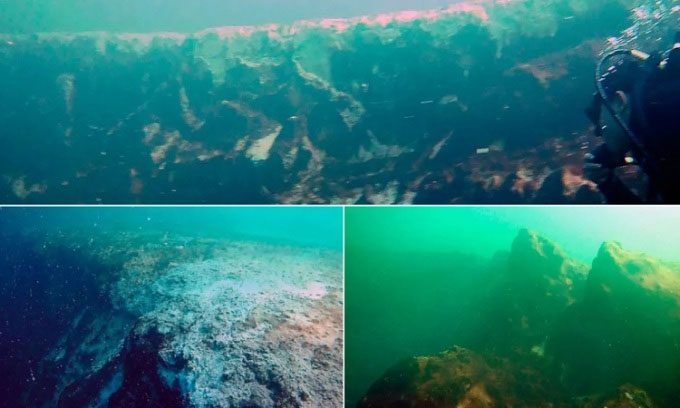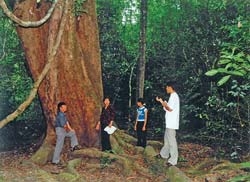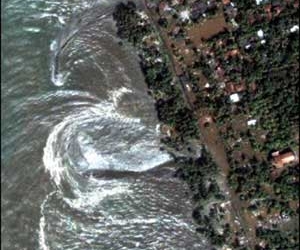The second largest blue hole in the world has been discovered off the Yucatan Peninsula, located in Chetumal Bay, with a depth of approximately 274 meters and covering an area of 13,660 m2.
The blue hole in Chetumal is called Taam Ja’, which means “deep water” in the Maya language. The walls of the hole are vertical with an almost 80-degree slope. The entrance to the cave is located 4.6 meters below sea level. Its depth is just slightly less than the current world record holder, the Dragon Hole in the South China Sea (over 300 meters deep). Scientists from the research center El Colegio de la Frontera Sur (Ecosur), coordinated by Mexico’s Council of Science and Technology, first discovered the hole in 2021, as reported by Live Science on April 21.

Underwater image of the Taam Ja’ blue hole. (Photo: Alcérreca-Huerta)
Blue holes are vertical caves or sinkholes located in coastal areas. Many of these holes contain a highly diverse ecosystem of marine flora and fauna, including corals, sea turtles, and sharks. They form when seawater interacts with limestone. This type of rock is highly porous, allowing water to seep through, which facilitates chemical reactions with the limestone and leads to its erosion.
Many blue holes formed during the Ice Age when continuous flooding in coastal regions eroded limestone and created voids. As the last Ice Age ended about 11,000 years ago and sea levels rose, some caves became submerged while others were completely flooded. According to Christopher G. Smith, a coastal geologist from the U.S. Geological Survey (USGS), very little is known about blue holes. The unique chemical composition of seawater in blue holes indicates that it may interact with groundwater and aquifers.
Blue holes contain very little oxygen, and sunlight only penetrates their surfaces. Despite these conditions, blue holes are teeming with life that has adapted to the low-oxygen environment. With limited oxygen and light, fossils from thousands of years ago are well-preserved, allowing scientists to identify extinct species.
In 2012, researchers studying a blue hole in the Bahamas discovered bacteria deep within the cave where other life forms did not exist. This finding could provide clues about life forms that might survive in harsh conditions on other worlds within the Solar System.





















































